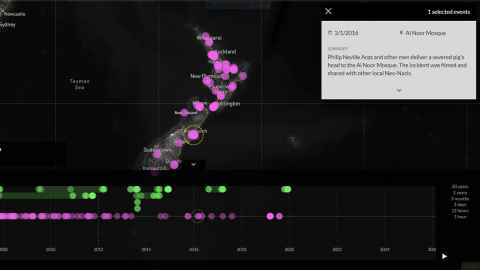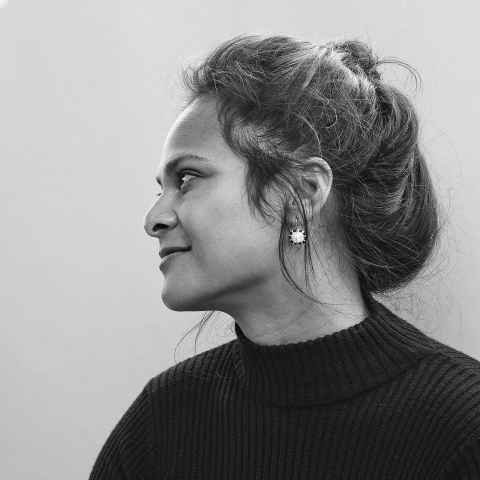New exhibition maps racialised over-policing and law changes in New Zealand
10 June 2020
An exhibition capturing instances of racialised human rights violations in New Zealand through interactive mapping, initiated by Pacific architectural researcher Dr Karamia Müller, University of Auckland, has opened at the Adam Art Gallery/ Te Pātaka Toi.

The exhibition, Violent Legalities, uses architectural media and open-source software to map the social and political events around the built realm, drawing attention to longer narratives of state-related violence in New Zealand alongside the legislative changes that preceded and followed them.
Violent Legalities was conceptualised by Dr Müller, School of Architecture and Planning, and Lachlan Kermode, a New Zealander and software lead and researcher at Forensic Architecture, an influential London-based agency which documents human rights violations carried out by state agencies.
The exhibition features three TimeMap platforms developed by Forensic Architecture that visualise ongoing colonial legacies across New Zealand: the social relationships between legal activity and racialised hyper-policing, the Treaty of Waitangi Tribunal findings of claims submitted by iwi and hāpu of the Te Urewera district, and the links between state care and the expanding prison population.
The works draw attention to communities who don’t receive the protection they deserve, yet are subjected to over-policing. To reflect this the research team conceived of extending TimeMap to include legal activity.
In the years prior to the mosque shootings in 2019 spokespeople from New Zealand’s Muslim community tried to bring state attention to white supremacist threats towards Muslims, says Dr Müller, but there was no notable response from the state, and a marked lack of intervention.
“In contrast, the New Zealand government introduced the Terrorism Suppression Act in 2002 in response to 9/11. This authorised the continuation and acceleration of state-sponsored surveillance and policing, which enabled police to monitor Māori activist groups in the Te Urewera district for 12 months from 2007-2009, and led to the 2007 Urewera unlawful roadblocks and raids.”

“The relationship between the two is slippery, but what is clear is that in centring the experiences of people subjected to racialised over-policing, you find much longer durations of legislative activity interpreted by state agencies that enables racialised violence, and it is now hundreds of years in the making.”
“Through mapping and interactive technologies, we have visualised law-making together with racialised experiences. Our research shows we must centre these experiences to address structural inequities and save lives,” says Dr Müller. “We must centre Black lives, we must centre Māori lives, we must centre Muslim lives, we must centre Pasifika lives, we must centre Trans lives, and we must centre Indigenous lives when we think about the state, and what we consider justice, and we must do so urgently.”
The collaborative project explores more than 500 incidents and events, supported by hundreds of sources, is ongoing and brings together an international team of contributors spanning anthropology, architecture, art and web development.
More about the research can also be found on the Violent Legalities website.
Media contact
Margo White I Media adviser
DDI 09 923 5504
Mob 021 926 408
Email margo.white@auckland.ac.nz